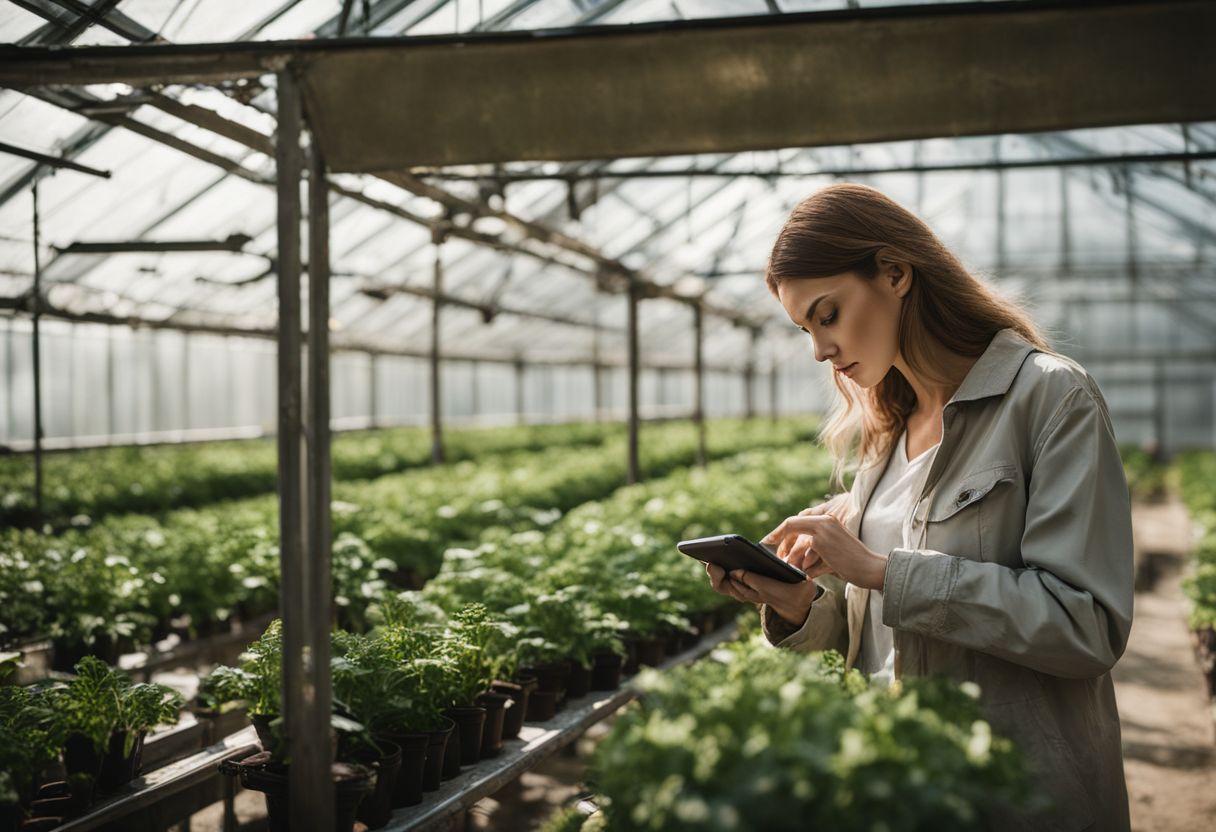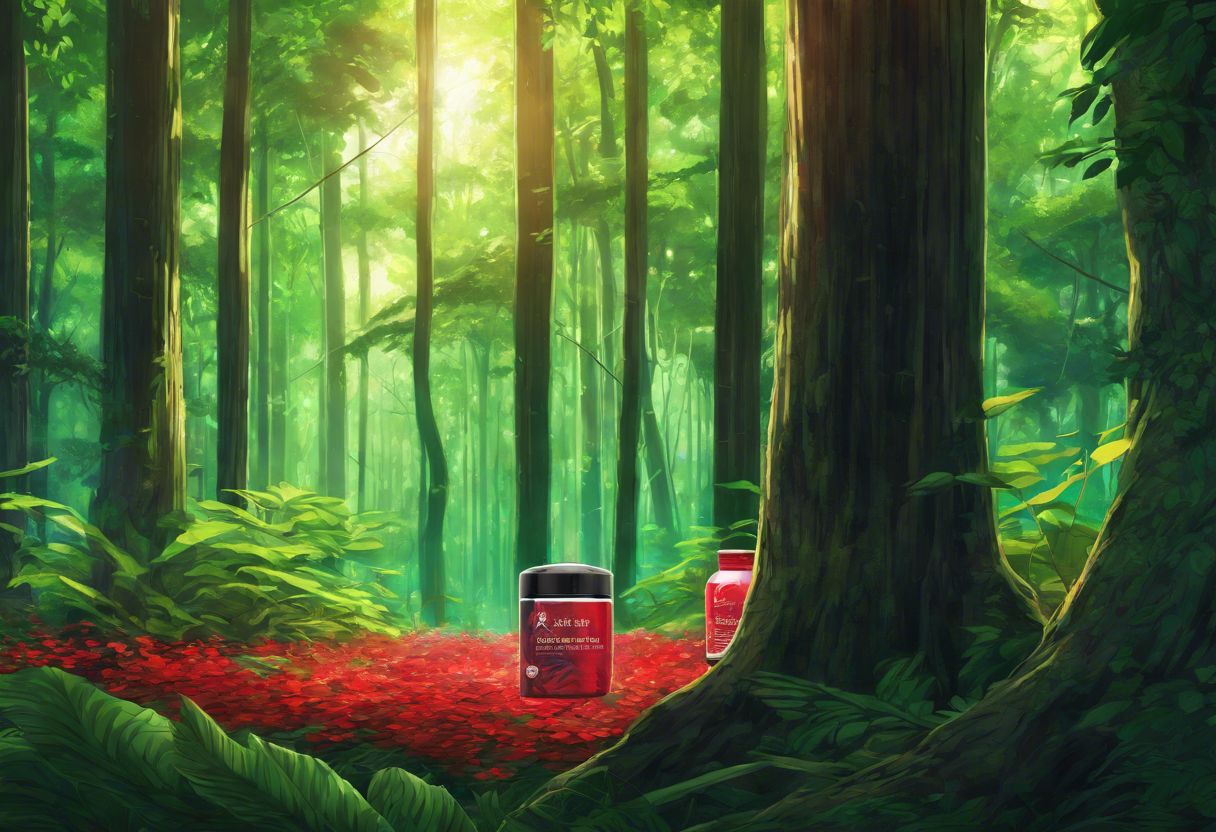Are you worried about spots or mildew on your plants? This is a common issue many plant owners face. In this article, we’ll explore methods to identify and solve plant diseases using the latest in computer vision and artificial intelligence.
Get ready to give your greens the care they deserve.
Key Takeaways
- Check your plants often for signs of disease like spots, unusual growths, or changes in color. Use tools like magnifying glasses and apps to spot tiny bugs or fungi.
- Fight plant diseases with methods such as removing infected parts, using fungicides, and keeping gardens clean. Crop rotation and choosing disease-resistant plants can also help.
- Apps can quickly identify diseases by analyzing pictures of your plants. This tech uses special learning to give advice on how to treat the sickness.
- Natural ways to control diseases include using good insects and bacteria that eat harmful bugs or fight off the bad fungi without using dangerous chemicals.
- Keep your plants healthy by watering them right, giving them enough light, checking for pests, pruning when needed, and feeding them properly.
Common Plant Diseases

Plant diseases like anthracnose, apple scab, black knot, and powdery mildew pose a risk to your plants and can impact your garden’s health. Understanding these common plant diseases is crucial for effective gardening.
Anthracnose
Anthracnose is a common fungus that attacks many plants. Dark, water-soaked spots appear on leaves, stems, and fruits. These spots grow bigger quickly. The disease thrives in wet conditions and can spread fast among your garden plants.
To fight anthracnose, you need early detection and quick action. Remove affected parts and avoid watering from above to keep leaves dry. For serious cases, fungicides might be necessary.
Keeping your garden clean of debris also helps prevent this sneaky fungus from taking hold again.
Apple Scab
Apple Scab is a common disease that affects apple trees. It’s caused by the fungus Venturia inaequalis. This fungus enjoys cool, wet springs and can make apple leaves turn yellow and drop too early.
The fruit gets dark, scabby spots, making them look bad and sometimes taste bitter.
To fight Apple Scab, gardeners use both traditional methods and modern tech. They remove fallen leaves, which can carry the fungus over winter. Spraying with fungicides helps protect new leaves and fruit from infection.
For those who love tech, plant disease identifier apps are handy tools. These apps use machine learning to recognize diseases from pictures you take with your smartphone or tablet—yes, even on an iPod touch or iPad running iOS! Some of these apps might need you to set up an iTunes account for updates or in-app purchases but think about the convenience of getting instant advice right in your garden!
Black Knot
Black Knot is a tricky disease that attacks plum and cherry trees, and it’s caused by a fungus named Apiosporina morbosa. This disease makes ugly black growths or knots on the branches of the trees.
These knots start small but can grow bigger, wrapping around the branch. If not treated, Black Knot can weaken your tree and even kill it over time.
To fight Black Knot, you need to catch it early. Check your trees often for any signs of the disease, especially during warm months when fungi thrive. If you spot these black bumps on the branches, cut them off immediately – make sure to remove at least 4 inches below each knot to get rid of all infected parts.
After cutting away the disease, always clean your tools with alcohol or bleach to prevent spreading. Some gardeners also use fungicides as an extra step in protecting their trees from this stubborn fungal invader.
Powdery Mildew
Powdery mildew, a common plant disease, appears as white powdery patches on leaves and stems… It affects plants like roses, cucumbers, and zucchinis. This fungal disease thrives in warm, dry environments…
You can combat it by trimming affected areas and using fungicidal sprays. Remember to maintain good air circulation around your plants to prevent powdery mildew. Keep an eye out for this issue as you care for your beloved garden.
Techniques for Identifying Plant Diseases

Visual Inspection
Check your plants regularly for any signs of discoloration, spots, or unusual growth. Look for yellowing leaves, brown spots, or powdery residue on the surface. These could be indicative of pests or diseases.
Take note of any changes in the plant’s overall appearance and health over time as well.
Using a magnifying glass can help you get a closer look at the leaves and stems to spot any tiny insects like aphids or mites that may not be immediately visible to the naked eye. Additionally, tools such as handheld microscopes can aid in identifying microscopic pathogens like fungi spores that could be causing damage to your plants.
Use of Plant Disease Identifier Apps
Plant disease identifier apps are user-friendly tools that empower you to swiftly diagnose plant issues. By simply capturing a picture of the affected area, these apps leverage advanced image recognition technology, such as artificial neural networks and deep learning algorithms, to analyze the image for signs of common diseases like anthracnose or powdery mildew.
The app then promptly provides accurate identification and may even offer tailored solutions for treating the ailment – offering convenience and expertise right at your fingertips.
Utilizing these innovative apps not only simplifies diagnosis but also empowers you with actionable insights to effectively address plant ailments, ensuring the well-being of your beloved greenery.
Solutions for Plant Diseases
Combat plant diseases using cultural methods like crop rotation and proper plant spacing to reduce the risk of infections. Biological control through the use of natural enemies and disease-resistant plant varieties can also help maintain healthy plants.
Use chemical control as a last resort… Learn more about effective solutions for your plants’ well-being!
Cultural Methods
Cultural methods, such as crop rotation and selecting disease-resistant plant varieties, are vital for maintaining a healthy garden. Enhance soil health through composting and proper irrigation to bolster plant immunity against diseases.
These methods manage plant pest pressures and reduce the need for chemical controls, promoting a greener gardening approach that benefits both your plants and the environment.
Implement mulching to regulate soil temperature, retain moisture, and minimize weed growth. This shields plants from stresses caused by extreme conditions while retaining essential nutrients – crucial for strong, resilient foliage.
Biological Control
Biological control offers a natural way to manage plant diseases without harmful chemicals. This method uses living organisms, such as beneficial insects, nematodes, and microorganisms like bacteria and fungi, to suppress or eradicate plant pathogens.
By introducing these friendly agents into your garden or home, you can effectively combat common plant diseases while maintaining an eco-friendly environment devoid of synthetic pesticides and harmful residues.
Beneficial insects like ladybugs and green lacewings are known for their voracious appetite for aphids, mites, and other pests that damage plants. Nematodes are microscopic worms that seek out and feed on soil-dwelling pests like beetles’ larvae and fungus gnats.
Chemical Control
Chemical control involves using pesticides to manage plant diseases. When used correctly, these substances can effectively combat various types of fungal pathogens and viruses that may harm your plants.
However, it’s crucial to handle them with care and strictly follow the instructions on the label to prevent any damage to the environment or yourself.
Consider seeking advice from a professional in plant pathology or pest management before applying any chemical treatments. This helps ensure you choose the right product for your specific plant disease without causing unintended harm to other organisms in your ecosystem.
How to Take Care of Your Plants
To take care of your plants, follow these simple steps:
- Water your plants regularly, ensuring that the soil is moist but not waterlogged. Use a moisture meter to gauge the soil’s hydration level.
- Provide adequate sunlight by placing your plants in areas where they can receive sufficient natural light or supplement with grow lights if necessary.
- Monitor for signs of pest infestation and remove any affected leaves or areas promptly. Consider using natural remedies like neem oil or insecticidal soap.
- Prune your plants when necessary to promote healthy growth and airflow, removing any dead or diseased foliage.
- Use balanced fertilizer to provide essential nutrients for optimal plant growth, following the instructions carefully to avoid overfeeding.
These simple tips will help keep your plants healthy and thriving, enhancing the beauty of your home environment.
Conclusion
In summary, understanding plant diseases is crucial for maintaining a healthy garden. By using techniques such as visual inspection and plant disease identifier apps, you can promptly identify issues and take action.
Implementing cultural methods, biological control, and chemical control can effectively combat these diseases. With proper care and timely intervention, your plants can thrive despite potential threats.
FAQs
1. What’s the big deal with plant diseases, anyway?
Plant diseases, like sudden death syndrome or leaf spots, can seriously hurt crop production. They mess up ecosystems and make it hard for farmers to grow enough food. It’s not just about a few damaged leaves; it’s a big problem that affects our food supply.
2. How do scientists spot these sneaky plant diseases?
Thanks to cool tech like deep CNNs (convolutional neural networks) and hyperspectral imaging, experts can now identify sick plants early on. These tools look at images of plants in ways we can’t with our eyes alone, picking up on subtle signs of disease.
3. Can my smartphone really help me figure out if my plant is sick?
Yes! With advancements in artificial intelligence (AI), your iPod touch or any device with an Apple M1 chip could become a mini scientist. Apps powered by AI analyze photos of your plants to tell you what’s wrong and suggest treatment options.
4. Is there more than one way to find out what’s bugging my plants?
Absolutely! From infrared thermography that detects heat changes in sick plants to support vector machines that classify diseases based on complex data – there are tons of methods out there. Each has its own pros and cons depending on the situation.
5. Why does accuracy matter so much in identifying plant diseases?
Getting it right means we can treat the plant correctly without wasting time or resources on the wrong problem — think precision medicine but for plants! High accuracy helps reduce unnecessary pesticide use and protects our environment too.
6. I heard something about smart agriculture… what’s that all about?
Smart agriculture uses technologies like IoT (Internet of Things), deep learning, and AI to make farming smarter – literally! It means using data analysis from sensors and machines to make better decisions about treating plant diseases, which keeps crops healthy and boosts production without harming the planet.






